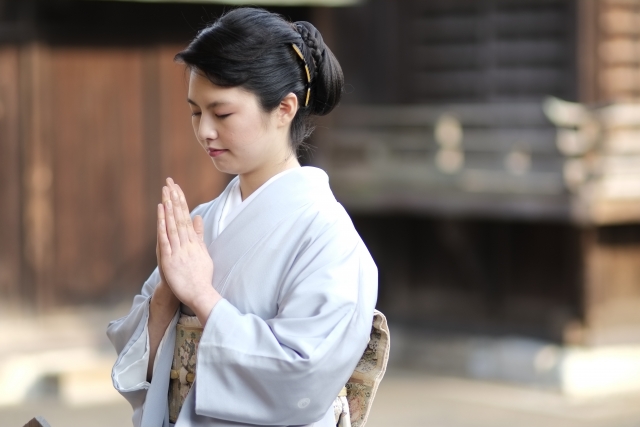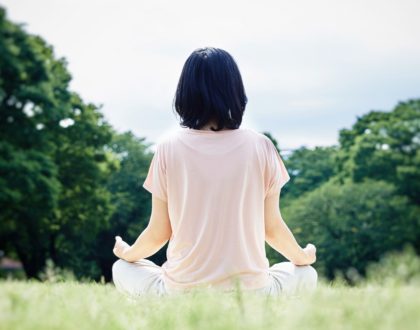How to pray at a Japanese Shrine

by Connie
It’s kind of a shame, but I never really understood the culture and rules of praying at shrines. Why do people wash their hands before entering the shrine? How do I make a wish? Let me explain what I learned about Japanese shrine culture and worship.
コンテンツ
Shrine or Temple?
As a foreigner working in Japan, I have been to Shinto shrines many times. Sometimes I go to shrines to pray and make a wish, sometimes I just go for walks since they are usually pretty and peaceful. Before diving into the rules, first, a short recap on the differences between temples and shrines in Japan. Remembering the rules, just to mistakenly use them at the wrong place would be a shame.
- The place you are at is called something 神社 (じんじゃ)? Congratulations you found yourself a Shinto shrine!
- Is there a torii (big often red gate, same as in the main picture) you walk through to enter the facility? Also a shrine! If you encounter a more massive structure, resembling a house with some demons in the aisles you are out of luck.
- There is a pair of dog-like statues behind the gate?
Then you likely found 狛犬 (こまいぬ) which belong to shrines. - The name ends in -ji? Like Senso-ji or Ginkaku-ji this ending tells you it’s a temple.
- Do you see Buddha status anywhere? You found a holy place for Buddhist, ergo a temple.
- Do you see a pagoda around? If yes, it’s a temple.
- Is there an incense burner in the front of the main building? You probably got lost at a temple.
Shrines and their Purpose
Let’s also take a quick look at the types of shrines you are likely to encounter. Depending on their wish, people go to specific shrines that have reputation for making that specific kind of prayer come true. Why don’t you try it out yourself sometime?
Jingu (神宮)
Shrines which name ends in Jingu are places to pray for safety and good luck. Itis a shrine built to remember and pray to a Japanese Emperor from the past. Since the Japanese imperial family is believed to be decedents from god, some ancestors of the imperial household are revered as gods themselves.
Example: Meiji Jingu, Tokyo
Tenma (天満)
Tenma is a kind of Shinto shrine for praying to Sugawara no Michizane. He was a famous scholar from the Heian period, who is now revered as the god of scholarship and learning. You should go there if you want to pass an exam, or pray for academic improvement.
Example: Dazaifu Tenman-gū, Fukuoka
Hachiman (八幡)
Hachiman shrines are true all-rounders. People go there to pray for easy child delivery, escape from bad luck, winning wishes and a long life. These shrines are a place to pray to the deified Emperor Ōjin(応神天皇), called Hachiman.
He is often called the god of archery and war, but can more correctly be described as the guardian god of the samurai, Japan, and the Japanese people.
Example: Usa Shrine, Ōita
Inari (稲荷)
Inari Ōkami 稲荷大神 is one of the main gods in the Shinto tradition. He is the god of farming and business, that’s why it is the place to go to ask for Business prosperity or abundant harvest. Inari shrines can be easily identified by the fox statues (kitsune).
Example: Fushimi Inari, Kyoto
The shrine gate
When approaching the shrine, you will probably notice a big gate. It will often be red, but not always. This gate which is the door of the shrine is called “Torii” and separates the “holy zone” from our daily world. Usually, people wash up, take off their hats, and bow to the shrine before walking through the gate.
Also, be careful not to walk in the middle of the path because it is meant for holy beings.
How to wash your hands at a Shrine
Once you enter the shrine you will see a tank where people are washing their hands. The tank is called “Chozu” or “Temizu”(手水). Supposedly this does not only clean your hands, but also your spirit.
Here is how to do Chozu properly.
- Pick up the scoop with your right hand and fill it with water.
- Clean your left hand, using only some of the water.
- Switch the scoop to your left hand and clean your right hand.
- Switch the scoop back to your right hand and put some water into your left hand.
- Clean your mouth with the water in your left hand.
- Clean your left hand again with some water.
- Hold the scoop vertically and let the water run down and clean the part of the scoop where you are holding it.
- Put the scoop back.
Done! Remember the entire process should be done with one scoop of water! So don’t use too much water for each step.
How to make a wish
Now we are finally getting to the main part: how to make a wish! To make a wish, you should prepare some money called 賽銭さいせん. The Saisen is an offer to the god. The recommended amount as Saisen is 5 Yen because in Japanese 5 Yen, means good relation (ご縁).
In the past, people used rice as offer to the god instead of coins. The actual meaning of this offering is to thank deity for past wishes, and not for the wishes you are about to make. Don’t forget to throw coins gently when making wishes!
Steps to make the kami hear your wish:
- If it is busy, line up, wait for you turn and give the person in front of you space and time before pushing up front yourself.
- Throw the coins into the money box (賽銭箱).
- Ring the bell (to announce yourself).
- Bow twice.
- Clap twice.
- Make a wish while putting the palms of your hands together (standard praying posture).
- Bow again.
Done! Hope this article will help you to pray like a local on your next visit to a shrine!
Recommended Posts

May Sickness: A Japanese Phenomenon
10 5月 2021 - Daily Life, Life




